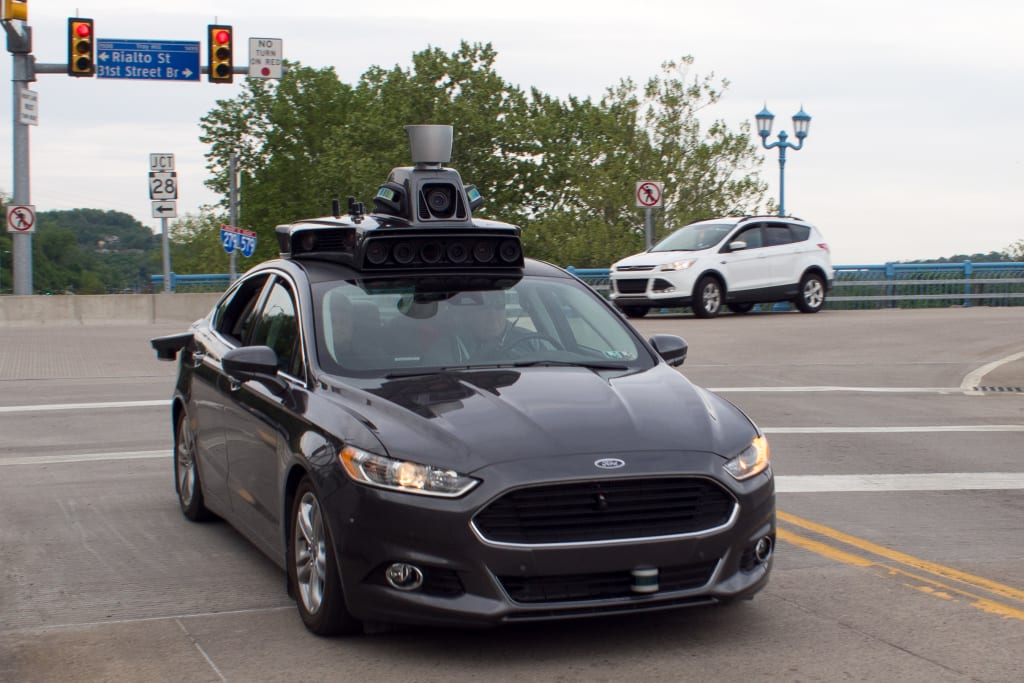The Technologies Behind Self-Driving
The technologies and tools that power the future of autonomous driving

Self-driving technology for cars is the next big step for the industry. This is evident by the enormous number of companies that try to get involved in the development of the future of this technology. Obviously, many of them are car manufacturers that want to profit from the hype. However, the most interesting things are performed by the technology companies that develop special tools to make self-driving possible. This tools and the technologies behind them I evaluate in this article.
Sensors
One of the most important parts of any autopilot is a set of sensors. Primarily, there are three different types of these tools: cameras, ultrasonic/radars, and lidars.
Importantly, these three types of sensors are not interchangeable, as they perform totally different tasks. Thus, radars are able to detect moving objects in the surroundings of a vehicle but are unable to detect lines or traffic lights, and they are not very precise at human detection. One of the examples of companies working on this technology is Texas Instruments with its 77 GHz radar solution.
Lidars have similar features but can more easily detect humans. At the same time, they are also more expensive than radars. Simply speaking, a lidar sensor shines a small light on a surface and measures the time it takes to return. The technology came primarily from geology and then was adopted for many use cases, including autonomous driving. Currently, this type of sensors is very expensive. However, some companies developing self-driving, like Google, invest heavily in the technology to make it more cost-efficient.
The primary sensors for autonomous vehicles are still cameras, which can detect all objects, including lines, traffic lights, and pedestrians. However, cameras fully rely on software to process all the input, therefore, using only cameras is difficult for a self-driving car system.
Software
The important addition to sensors is a software that processes the input. This task is not so trivial as it seems to be. The thing is a camera on a car does not see things in 3D while receiving only a 2D picture. The software is needed to then process the image and make it understandable for the system.
Moreover, the software is used to recognize objects and distinguish different types of car bodies, recognize a bicycle on the road, or detect a human.
Neural Networks
And here help Deep Neural Networks (DNNs). DNNs are required in order to make the process of recognizing objects and events possible. Borders on the road, the colour of a traffic light, a sedan or a truck - this is recognized and processed by DNNs.
The important feature here is the ability of learning. Obviously, people understand all these things by default and do it automatically. However, a machine needs a lot of data and time to start performing these usual tasks. Luckily, the level of artificial intelligence and machine learning reached the level which is high enough to drive a car in basic situations, like driving on a highway.
Hardware
As self-driving requires an extensive computing of data, it is obvious that a powerful hardware is needed to perform all the tasks. For doing this, special AI supercomputers are being developed by such famous GPU players as NVidia. It is claimed the computing power of such a device exceeds the capacity of 150 MacBooks taken together.
Clouds
After the data is collected from sensors and processed by a supercomputer with the use of special software, the information goes to a cloud. This is done primarily to enhance learning capabilities of a machine, as all the data from a fleet of cars is pooled and processed together. As a result, the big data allows a car to recognize a huge number of different situations on the road, thus making an autonomous driving safer.
Connectivity
Finally, it is important to connect not only a car to a network to make data processing possible but also all the cars between each other. The principle is similar to the idea behind the internet of things (IoT) which implies all the devices should be connected to each other to enhance their productivity and reliability.
To perform this task, a satellite connection is needed. This is the only way to ensure true global connection coverage, as traditional ground communication is unreliable in many parts of the world. Thus, a corporation named Iridium Communications already promises the coverage needed for further development of autonomous driving, as the company uses a sophisticated network of 66 low-Earth orbit (LEO) satellites. Importantly, the machine-to-machine communication services provided by Iridium are already used by many other companies.
Conclusion
verall, the technology of self-driving requires many separate components to be combined to achieve a comprehensive solution. As a result, I believe the technologies provided in the article will likely to experience massive growth and improvement, as the development of a fully autonomous vehicle attracts many people and companies.






Comments
There are no comments for this story
Be the first to respond and start the conversation.